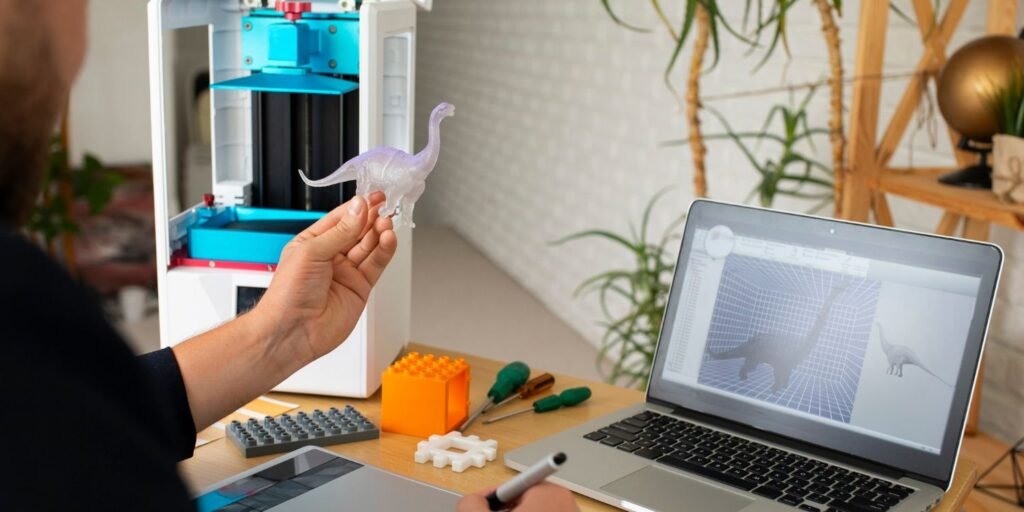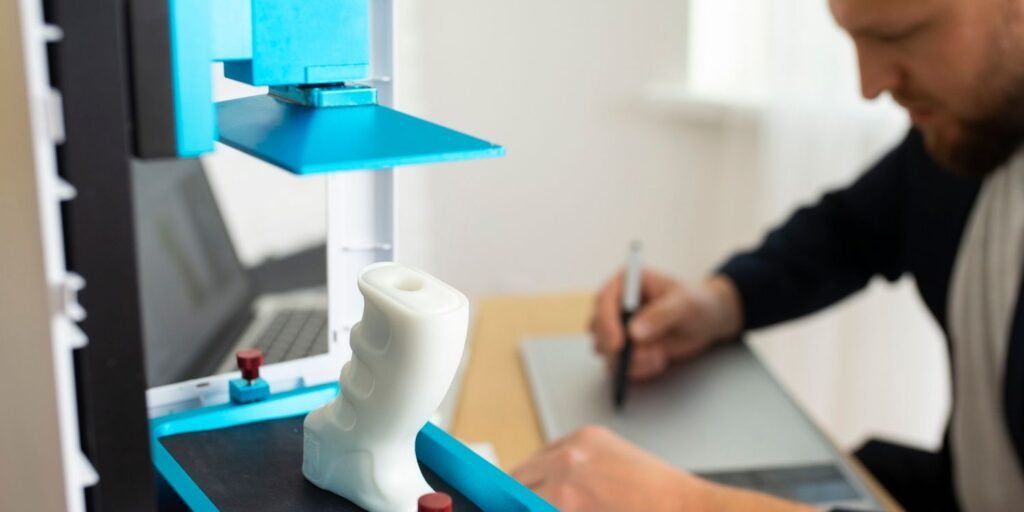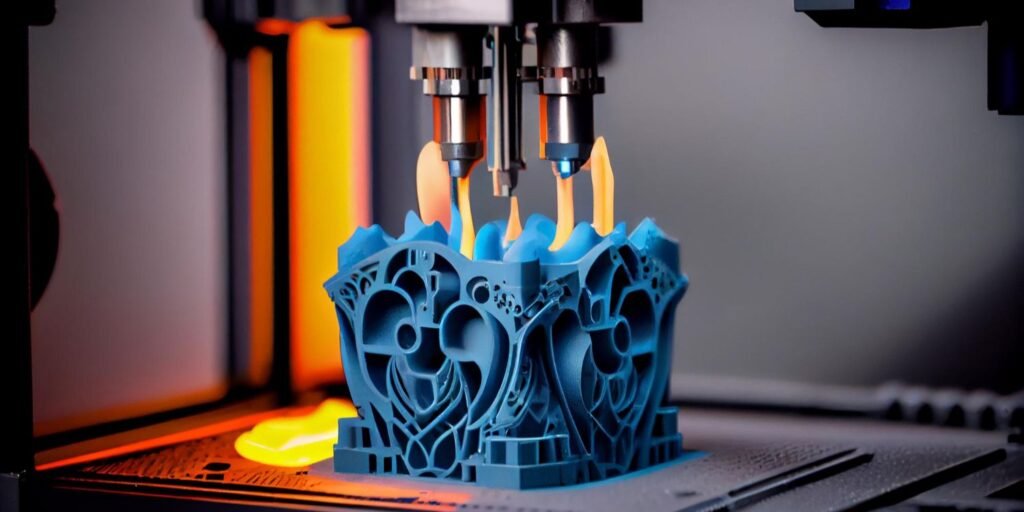How to Select the Appropriate Resin 3D Printer
What exactly is a resin 3D printer? In a nutshell, it’s a cutting-edge device that uses liquid resin to craft three-dimensional objects layer by layer. Intriguing, right? When it comes to selecting a resin 3D printer in 2023, several factors must be kept in mind to make the best decision possible for yourself and your needs. Here are a few essential considerations:

- Print Quality
A resin 3D printer should offer high-resolution printing capabilities for optimal model creation with smooth surfaces and crisp details. When searching for one, choose one with high resolution print capabilities to meet your model creation needs.
- Build Volume
Build volume refers to the maximum size of objects that a resin 3D printer is able to print. Consider what size models you intend on printing before choosing a printer with an appropriate build volume for you; keep in mind that larger build volumes generally carry a higher price tag.
- Speed
Each resin 3D printer offers different printing speeds; if your project involves time-sensitive items that must be completed within a short amount of time, or multiple prints in quick succession, consider purchasing one that offers faster printing speeds.
- Resin Compatibility
Not all resin 3D printers are suitable for every kind of resin available on the market; some only work with certain brands or formulations of it. When selecting your printer, be sure to research its compatibility with any specific brand of resin that you plan on using before making your decision.
- User-Friendly Features
It is essential that any resin 3D printer offers user-friendly features, including touchscreen displays, intuitive software and straightforward calibration processes. Such features will make printing more straightforward for novice users and more enjoyable than ever!
- Reliability and Support
Reliability should always be top of mind when investing in a resin 3D printer. Look for reliable brands known for producing long-lasting printers; read customer reviews to gain an idea of its performance; check for customer support options with warranties as this can also play an integral role.
Consider these factors carefully in order to make an informed choice and select a resin 3D printer in 2023 that meets all of your specific requirements. When prioritizing needs and budget, find one that will bring your 3D printing projects into fruition.
Comparison of Top Five Resin 3D Printers in 2023
Selecting the appropriate resin 3D printer is key to producing high-quality prints and an enjoyable printing experience, but technology’s rapid advancement makes staying up-to-date difficult. To help make an informed decision, we have compiled this list of the five top resin 3D printers of 2023 according to performance, features, and user reviews.

Formlabs Form 3
The Formlabs Form 3 is an industry-standard resin 3D printer known for its superior print quality and reliability. Utilizing Low Force Stereolithography (LFS) technology, this printer produces highly detailed prints with minimal layer lines – an added plus being its user-friendly interface and range of resin materials supported. It’s suitable for various applications as well!
Anycubic Photon Mono X2
The Anycubic Photon Mono X2 is an extremely popular choice among hobbyists and small businesses alike, due to its large printing volume and 4K monochrome LCD screen with fast printing speeds and detailed prints. In addition, its durable build plate and dual linear rail system ensure stable printing processes with precision during their print processes.


Elegoo Saturn 3
The Elegoo Saturn 3 is an impressive resin 3D printer that boasts both an impressive build volume and fast printing speed, featuring its 10-inch 12K monochrome LCD screen for quick production of highly detailed prints. Furthermore, this user-friendly printer supports various resin materials suitable for various applications – making it suitable for various uses and enhancing efficiency in everyday workflow.
Phrozen Sonic Mighty
For its size, this resin 3D printer packs quite a punch! Boasting fast printing speeds and an LCD screen displaying 4K monochrome resolution images of fine details prints, its compact aluminum body makes operation simple while its intuitive touchscreen interface ensures easy operation.


Creality Resin 3D
The Creality Resin 3D is a budget-friendly resin 3D printer with outstanding print quality, featuring a 8K monochrome LCD screen for fast and accurate prints. Additionally, its straightforward yet robust design features anti-aliasing effects to reduce jagged edges on printed models.
These five resin 3D printers in 2023 represent the top five available today, each offering unique features and benefits to meet individual needs and budgets. From professionals looking for precision to hobbyists attempting their first resin printing experience, investing in one from this list will undoubtedly enhance your printing experience. When making your decision keep factors like print quality, build volume, user friendliness and availability of resin materials in mind when making a choice.
Resin 3D Printing Technology
Resin 3D printing has seen increased usage due to its ability to produce highly detailed prints with great detail. Like any technology, however, resin 3D printing has its own set of advantages and disadvantages, which we will examine here.

Pros of Resin 3D Printing
Resin 3D printers provide unparalleled print quality, producing detailed prints with intricate geometries. Their high resolution and accuracy make resin prints the ideal choice for jewelry making, dental models and prototyping applications.
Resin 3D printers can accommodate an expansive array of materials, such as various photopolymer resins. Each type offers different colors, strengths, and properties so users can select one best suited to their unique requirements.
Resin 3D printers are well known for their fast printing speed compared to other 3D printing technologies, as their process relies on curing resin layer by layer using UV light, which speeds up production times significantly and reduces overall production times.
Resin 3D Printers Are Able to Produce Complex Designs: These printers can produce intricate and complex designs which may otherwise be unmanufacturable through traditional manufacturing techniques, making them the go-to choice for creating detailed prototypes, artistic sculptures, and customized products.
Resin prints come directly out of the printer with a smooth surface finish, eliminating the need for post-processing work such as sanding or polishing afterwards. This not only saves time, but ensures consistent and professional looking objects printed with resin.
Cons of Resin 3D Printing
Limited Print Volume: Most resin 3D printers have a smaller print volume compared to FDM (Fused Deposition Modeling) printers, limiting what can be printed. This may not be suitable for projects requiring larger-scale prints.
Toxic Fumes and Chemical Exposure: 3D printer resin contains chemicals which produce unpleasant odors and toxic fumes during printing. Proper ventilation or using an enclosed printer are both recommended to minimize exposure and ensure a safe working environment.
Messy and Time-Consuming Workflow: Resin printing involves handling sticky and liquid materials that can become messy during printing. Furthermore, post-processing steps like washing and curing of prints may take more time compared to other 3D printing technologies.
Higher Cost: Resin 3D printers tend to carry higher upfront costs compared to FDM printers. Resin materials and expenses associated with replacing disposable components like resin tanks and build platforms can add up over time, leading to additional expenses that must be factored into calculations of their true costs.
Limitations in Functional Part Creation via Resin 3D Printing: Although resin 3D printing offers an extensive selection of materials, not all resins may be appropriate for functional parts requiring high strength and durability. Mechanical properties produced using other manufacturing processes may provide stronger mechanical properties compared to resin prints.
Resin 3D printing technology offers many advantages, such as superior print quality, an extensive variety of material choices and fast printing speed. However, resin 3D printing technology does have some drawbacks as well; such as limited print volume capacity exposure to toxic fumes and higher costs are just some of the factors to be taken into consideration when choosing whether resin 3D printing will meet your particular needs and applications. It is crucial that both benefits and drawbacks be carefully considered when making this decision.

Tips for Achieve High-Quality Prints with a Resin 3D Printer
Producing quality resin 3D prints takes careful attention and practiced technique. Here are a few helpful hints that can help you produce stellar prints from your resin 3D printer.
- Choose an Appropriate Resin When selecting the ideal resin for your project, selecting it carefully is key. Different resins have unique properties like curing times, level of detail and durability which must all be taken into consideration before selecting a resin that best matches up with its requirements – be it flexibility, strength or resolution there will surely be one out there to meet them all!
- Calibrate Your Printer To ensure precise prints, it is crucial that your resin 3D printer be calibrated properly. Pay particular attention to leveling of the build plate so it is properly aligned with the screen, and ensure exposure settings match up to whatever resin type is being used. Calibration can prevent issues like warping, layer shifting and poor adhesion that arise due to improper settings.
- Optimize Supports Support structures are an integral component of resin 3D printing, providing structural integrity during the printing process and helping ensure consistent quality prints. Unfortunately, poorly designed supports can drastically diminish print quality if they’re poorly tuned; take the time to fine-tune and optimize your support settings ensuring adequate support without excessive excess; this will reduce post-processing needs while yielding cleaner, smoother prints.
- Monitor and Control Environmental Factors Resin 3D printing can be highly susceptible to environmental factors like temperature and humidity fluctuations, so make sure that your printing environment remains steady without fluctuations or temperature swings that might alter resin properties causing print failure or lower quality prints. Invest in temperature controlled enclosures or dehumidifiers as ways of creating an even environment.
- Clean and Cure Accurately After printing, it’s essential to both thoroughly clean and cure resin prints using UV light curing chambers or boxes. Cleaning removes excess resin and supports, while curing hardens and stabilizes it fully. Ideally, adhere to manufacturer instructions when cleaning and curing for best results that result in stronger prints with better surface finishes.
- Post-Processing Techniques If you desire a smoother finish or enhanced aesthetics, post-processing techniques may help achieve that aim. Sanding, polishing, painting and applying top coat or sealant provide ways to refine the appearance of resin prints while adding durability. Experiment with various techniques and finishes until you achieve what is desired!
Tips to optimize resin 3D printing workflow will enable you to consistently produce high-quality prints. By choosing the appropriate resin, calibrating your printer, optimizing supports, monitoring environmental factors and cleaning and curing prints according to best practices, you will unlock its full potential and produce beautiful prints for projects of any kind.

Future Developments and Trends of Resin 3D Printing Technology
Resin 3D printing has seen tremendous advances over the last several years, and its future appears bright. Looking ahead into 2023, several developments and trends can be expected in resin 3D printing technology.
One of the most exciting developments in resin 3D printing is its expanding selection of materials. While traditional photopolymer resin 3D printers may use photopolymer, we should now see access to more materials including engineering-grade resins with superior performance and durability, flexible functional resins for various uses, and engineering grade resins for complex functional parts production. With such variety at our fingertips, resin 3D printing will become even more flexible in producing complex yet functional parts than ever before!
Resin 3D printing will continue its trend toward faster printing speeds in 2018. Recent years have seen significant advances in resin 3D printer technology that now allows some models to print objects within minutes rather than hours, significantly improving productivity while opening up opportunities for on-demand manufacturing and rapid prototyping. As technology develops further, we can expect even faster printing speeds for more efficient production processes.
Resin 3D printers will continue to advance in terms of resolution and accuracy, offering ever-more intricate details at impressive resolutions – an advantage over conventional 3D printing methods in industries like jewelry making, dentistry and healthcare. Furthermore, higher resolutions will facilitate intricate designs being printed with greater precision – making resin 3D printing an attractive solution.
Watch for an exciting trend in resin 3D printing: the incorporation of smart features and connectivity. Manufacturers are exploring ways to incorporate wireless connectivity and smart functionality into resin 3D printers, allowing for remote monitoring and control from anywhere – perfect for larger print jobs that may need monitoring remotely from any location! Additionally, smart features may include automated calibration or self-cleaning features which streamline printing processes while decreasing maintenance requirements.
Resin 3D printing will likely become more accessible and user-friendly as technology matures, as manufacturers work towards simplifying user experiences and eliminating common pain points associated with resin printing. These improvements could include improvements to software interfaces, intuitive controls and enhanced support for beginners – opening up more people to take advantage of resin 3D printing for personal or professional projects alike.
Resin 3D printing promises an exciting future, with exciting developments and trends on the horizon. These include new materials being introduced as well as faster printing speeds, improved resolutions, smart features and user-friendliness all set to revolutionize industries and unleash creativity like never before. As we move towards 2023 and beyond, it will be fascinating to watch how resin 3D printing continues its path forward and shapes manufacturing and design worlds alike
Conclusion
Selecting the ideal resin 3D printer in 2023 requires careful consideration of multiple factors. By understanding your printing volume, speed, budgetary restrictions and desired features of each of the top five resin 3D printers available today you can narrow your choices down and find an appropriate printer that meets all your requirements. Furthermore, by comparing features, performance ratings and customer reviews you can make an informed decision when making this important purchase decision.
Resin 3D printing technology offers numerous benefits, such as high-resolution prints with smooth surface finishes and the ability to print intricate and complex designs. However, resin 3D printing does have some drawbacks too, such as post-processing requirements, strong odor emitted during printing processes, and limited materials available – it is therefore essential that users carefully consider these factors when considering whether resin 3D printing would suit their application or not.
For optimal prints with a resin 3D printer, there are a few strategies you should employ. First and foremost, ensure the printer is calibrated and leveled accordingly to avoid issues during printing, invest in high-quality resin according to manufacturer recommendations, post process prints accordingly and clean and post process regularly before post processing for durability as well as regular maintenance/cleaning of printer.
Looking forward, resin 3D printing technology’s future looks bright. There have been ongoing developments in materials, printing speed and volume that aim to overcome its current limitations. Additionally, advances in biocompatible resins will open up new opportunities in medical fields such as producing custom implants or prosthetics. It is anticipated that resin 3D printers will become more user-friendly making them accessible to a broader range of users.
Trend-wise, resin 3D printers are expected to increase as more industries recognize its benefits. Being able to create precise objects will prove useful in fields like jewelry design, dentistry and prototyping; furthermore as this technology becomes more affordable and compact it should become increasingly popular with both hobbyists and small businesses alike.
Finding the ideal resin 3D printer in 2023 requires careful research and consideration of multiple factors. By evaluating five of the top printers available today, assessing their advantages and disadvantages of resin 3D printing technology, following tips to produce high-quality prints, staying informed about future developments and trends, you can make an informed decision and tap into its full potential. Adopting this innovative technology could transform how objects are designed and produced across industries – leading to endless possibilities and advancements that could make life better!
Thanks for your time keep Exploring Consumerseeker.com fo latest Tech reviews & updates.
